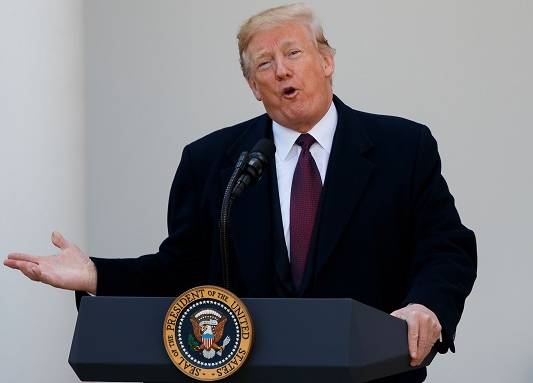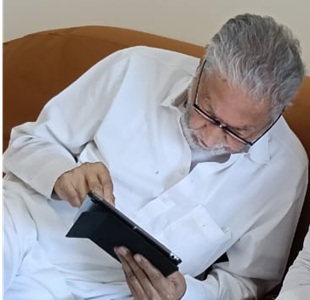On June 22, US President Donald Trump issued an executive order suspending the entry of a number of non-immigrant work visa holders into the US till the end of the year. The visa categories affected include, most notably, H-1B, which has been used by more than a million Indian information technology professionals since the 1990s and L1 visa used by US companies to bring in workers from their Indian offices.
During his campaign for President four years ago, candidate Trump consistently railed against the H-1B programme. However, after he moved into the White House, Trump left the visa programme untouched in the first 43 months of his presidency, even as he delivered on most of his controversial campaign promises, such as the Muslim ban and dumping of multilateral treaties like NAFTA and Paris Agreement, through executive actions.
There were two compelling reasons Trump didn”t act on the visa programme until now. The US economy had been doing very well until Coronavirus hit the American shores early this year. And, the tech industry, which employs three-fourths of the H-1B visa holders, has been doing even better.
The second reason is the formidable lobbying power of the industry. The four most valuable companies in the world, Amazon, Google, Apple and Microsoft, and Facebook have historically used the H-1B workforce to augment their profits. They were not going to let it go without a fight.
The influence these organizations wield was evident when Trump spared H-1B in his first executive order to curb nonimmigrant work visa holders issued on April 22. According to reports, H-1B was to be part of that proclamation but the White House was talked out of it by the industry.
So, what has changed between late April and today?
A number of things, but primarily it is Trump”s dimming re-election prospects. A steady stream of polls in the past few weeks has shown that the incumbent is trailing badly in the race against presumptive Democratic nominee Joe Biden. The President”s handling of the Covid-19 pandemic — his initial refusal to see it as a threat and then his inability to provide the leadership to contain it — has shaken people”s confidence in Trump”s presidency.
Prior to the onset of the Coronavirus, Trump was banking on making the election a referendum on his stewardship of the economy. But the pandemic, which has claimed more than 125,000 American lives, has also eliminated up to 40 million jobs.
Although some of the jobs have come back thanks to the multitrillion dollar stimulus package, the re-opening plans promoted by Trump have not produced substantial results. Now, with parts of the country closing down again, and the deadly virus spreading in southern and western states, there”s no sign of the economy turning the corner before the November election.
Consequently, Trump needs to be seen as doing something to save the economy and American jobs. H-1B, which has been a bogeyman for the protectionists and economic nationalists, is an easy target during this downturn, even though study after study has documented that the visa programme actually helps create jobs. The administration claims that the executive order is going to save more than half a million American jobs without giving details.
It should be noted that the order mainly impacts petitioners who are outside of the US who have not gotten their visas stamped on their passports yet. As a result, it will only have little impact in the short term on those seeking work in the US.
The US Citizenship and Immigration Service issues roughly 85,000 new H-1B visas annually of which 20,000 are for those with US master”s degrees. Most petitioners in this category are already in the US and they will not have any problem in starting their jobs in October, typically the time new visa holders enter the work force.
According to immigration attorneys, a significant percentage of the remaining 65,000 visas are claimed by dependents of H-1B and L-1 visa holders, as well as foreign students who have graduated from US schools, but did not get the visa under the master”s degree quota. These groups will also not come under the purview of the executive order, as they are already in the country.
The real impact of the presidential proclamation, therefore, will be two-fold. First, as long as Trump is President, it will undoubtedly cause many international students, who are looking at the US as a potential destination for higher studies to reconsider their decisions. During the Trump era, the US has already been losing potential students to nations such as Canada, Britain and Australia.
Second, despite the massive job losses in the broader economy, there are still vacancies in the tech industry that will have to be filled to move its economy forward. The US tech sector has said for years that the country doesn”t produce enough skilled workers and the industry will suffer without the intake of manpower through H-1B and L1 visa programmes. If it becomes more difficult for these companies to hire foreign workers, they would probably outsource more and more of these jobs to foreign destinations, including India.
It is an irony that, while Trump is trying to bring manufacturing jobs back to the US, his nonimmigrant worker visa policy could force more high-paying service jobs offshore. What makes it doubly ironic is that this action which Trump has taken to try to save his job as President will not do so.
Given the current state of affairs, it is likely that on election day November 4, the American people will fire Donald Trump. After that, the decision on what to do with information technology visas in 2021 and going forward will be in someone else”s hands. And, Trump will have to find a new place of employment for himself.
The good news is Biden has already stated that his administration will lift the H-1B ban.







0 Comments